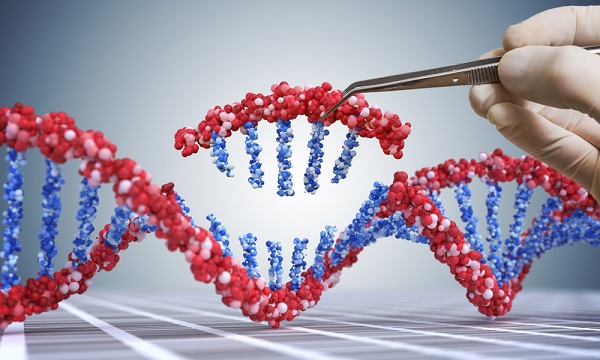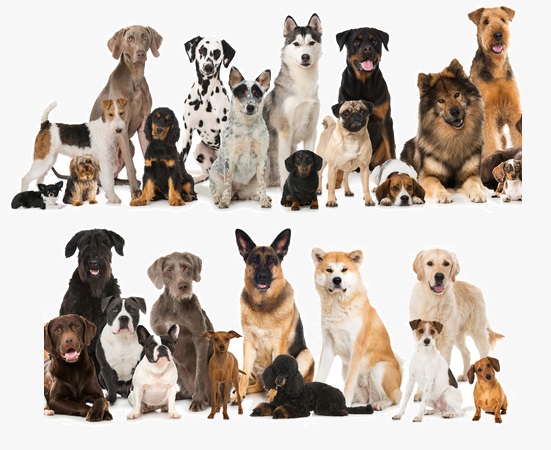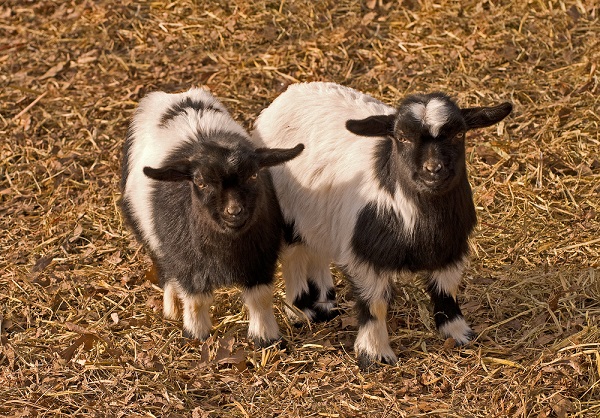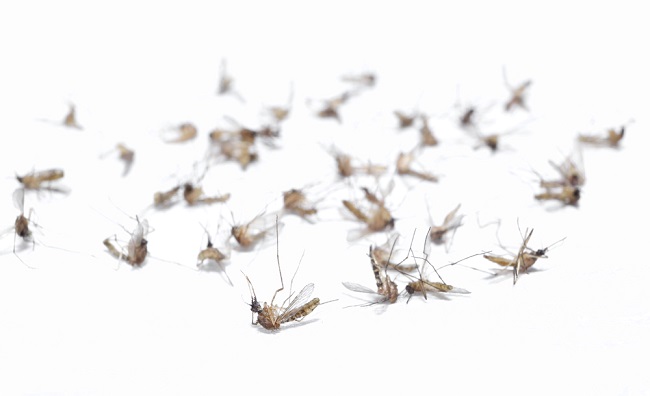Definition
Artificial selection or selective breeding describes the human selection of breeding pairs to produce favorable offspring. This applies to all organisms – from virus to four-footer, and from pet to food source. Artificial selection aims to increase the productive or esthetic value of an organism to our advantage.
Artificial Selection Examples
In the field of biology, artificial selection covers a whole host of subtopics. One can implement artificial selection to eradicate disease, increase yield per acre, lower competition within an ecosystem, or produce a new color in a breed of dog. With recent strides in the uncovering of the genetic sequences of a long list of organisms, it is possible to create genetic variations from within the embryo or even at gamete level. Any living thing that has been subjected to genetic engineering techniques which change DNA sequences is known as a genetically modified organism.

Farming Livestock
Aggressive male stock has been castrated for centuries, while those males with genotypes, phenotypes (dominant traits) of use to humans have been used as breeding stock. Artificial selection not only concerns the appearance, productivity or muscle mass of a food source but even its behavior. When riding horses or using one to pull a plough, a gelding is much easier to control than a stallion and, even before the study of genetics, it was known that a nervous disposition is not entirely the fault of the environment but of heritable traits.
Dairy cows are bred according to milk yield, sows which kill their young are removed from the breeding stock, and the more muscle mass a male calf is born with, the greater its chance of passing on its genes to the next generation.
In modern farming, pharmaceutical and nutritional developments have increased the productivity formerly controlled by selective breeding. The combination of genetics, health and behavior creates super-stock to feed the ever-growing world population with increasing efficiency.
Dogs
Artificial selection has been used for millennia. It is estimated that it has taken approximately 14,000 years of selective breeding to produce the huge number of ‘pure-bred’ dogs today, although the phrase pure-bred is incorrect, as only the original breed – the gray wolf – is, in essence, pure. From the huge Great Dane to the miniature chihuahua, and from the fastest, leanest greyhound to the shortest, slowest bulldog, each breed originates back to a common ancestor. This common ancestor was artificially bred to produce friendlier, faster and more useful versions for the benefit of the human race. Early artificial selection of dog breeds was primarily a move towards a loyal animal which would protect its human owner, increase his or her chances of a successful hunt and, when agriculture began, guard and guide stock. One breed does not fill all human requirements, and particular breeds have become synonymous with particular tasks. The speedy greyhound for the hunt, the intelligent collie for herding, the aggressive but loyal mastiff for protection, the bloodhound for tracking, and the small, pretty lapdog for comic companionship.

Wheat
Artificial selection in crops began when the first nomadic tribes settled and had to depend on local produce. A common ancestor of many of today’s cabbage family is the wild mustard plant, Brassica Oleracea. Triticum monococcum or einkorn wheat was first cultivated in Asia around 40,000 years ago and is thought to be the type from which all of today’s artifically selected wheat cultivars are derived. Einkorn wheat’s own ancestors are ancient wild grasses.
Modern wheat cultivation techniques have brought the entire world an important source of carbohydrates and dietary fiber, at the same time producing certain cultivars for specific uses. Wheat for beer, wheat for pasta, white wheat that lowers bleaching costs (as esthetically, humans prefer their flour to look white), low protein wheat that makes pastry and cakes light, and high protein wheat for bread. All of these modern cultivars produce more kernels per plant, are more resistant to disease, can be grown more closely together, and offer more competition to weeds than their ancestors.
Pest Control
Evolutionary biology has given us new techniques for the control of pests. These include genetic elimination (release of insects carrying a dominant lethal gene, or RIDL), and reproductive interference, where genetically adapted sterile forms are released into natural populations (sterile insect technique, or SIT). One genetically modified pest can kill or even cause a sex change in another, or it can lower the entire population’s reproductive rate through induced sterilization. Lesser used methods are CRISPR gene editing to create a negative mutagenic chain reaction (MCR), and RNA interference, where males are made sterile through the artificial introduction of double-stranded RNA through viral or fungal vectors which ‘silences’ testis genes. Another artificial control method is that of genetic underdominance, where offspring are less healthy than the parents, gradually lowering each subsequent generation’s success within an ecosystem.
Fainting Goats
Myotonia congenita is a hereditary condition where stress or physical exertion can cause fainting. A debilitating condition in man where the fight and flight reaction is replaced by temporary unconsciousness, goat breeding circles view this strange behavior in a more positive light. Goats with myotonia congenita do not climb the fences that surround them as the physical exertion leads to fainting. As goats are natural Houdini’s, this trait is highly coveted by goat farmers. Now recognized as an official breed, fainting goats are the result of relatively recent human artificial selection dating from just over a century ago.

Artificial Selections vs. Natural Selection
Unnatural selection, or artificial selection, is the result of human action. In the case of the abovementioned fainting goats, myotonia congenita would almost certainly lead to the mutation’s extinction should the animals involved live in the wild. This extinction would be the result of natural selection, as any predator attack would render the mutations easy prey and the majority of affected goats would not live to adulthood or breed, thereby passing on their myotonia congenita genes. The fainting goat can, therefore, be considered the product of unnatural selection.
Natural selection – a selection of certain alleles independent of human intervention – requires a set of specific conditions. These are the variation of alleles within a single species which must be heritable, and that ‘positive’ traits lead to larger populations of organisms featuring this trait because the trait increases survival and/or reproduction rates and population success.
In artificial selection, the variation of alleles is – currently – important, as is their heritability, although biotechnology may eventually render these criteria obsolete. The final criterion also changes: unnatural selection does not require successful reproductive or survival rates, only a genotype which is beneficial to man. A naked cat bred for human purposes is kept indoors, in a warm environment, with a goal to provide entertainment and companionship. Its survival depends upon its human owner, as does its reproduction rate. A crop that provides a good food source and is cheap to produce will receive water, shelter, pest control, and nutrients.
Natural selection is a slow process where in-species mutations need time to create a new and successful breed. Other factors can prevent the proliferation of a new set of alleles, even if this set is superior to the original. Predators, disease, climate and the ability or inability to find a mate through which the different alleles become dominant throughout the breed can create significant setbacks. On the other hand, natural or artificial selection is a rapid process as it occurs in protected and controlled environments where many of these factors are absent. Even the sourcing of a mate in which recessive but desired alleles are present has become unhindered since the recording of pedigrees and bloodlines, and the advent of artificial insemination.
As genetic research increases, the need to breed declines through scientific procedures such as cloning. The poles of natural and unnatural selection are therefore spreading further and further apart.
The Ethics of Artificial Selection
Artificial selection is used to improve the health and well-being of the global population or to improve the health and well-being of an individual. However, the benefit or disadvantage of other factors pertaining to the results of artificial selection is often forgotten.
Agricultural ecosystems featuring pest- and mold-resistant crops will, in principle, use fewer pesticides. The introduction of genetically-modified fish which are less likely to absorb heavy metals into their flesh into the seas may pass these genes on to wild populations and increase the overall reproduction rate of a species. Artificially selected trees can repopulate forests at a much more rapid rate. And the possibility of eliminating Dengue and malaria through the artificial selection of sterile mosquitoes is becoming less fictitious. Artificial selection in microbial ecosystems might even produce a microorganism that can successfully digest the microplastics that litter the oceans. It is therefore obvious that artificial selection has an important place now, and in the future.

However, artificial selection can also be used to damaging effect. Often, it is the quality of life of the artificially-selected species that is affected, such as respiratory infections and hypoxia in short-nosed dogs, and fainting in goats. Artificial selection also vastly reduces the amount of variation within a gene pool – a field of modern wheat contains just that, not the huge mix of wild grasses and meadow flowers a medieval wheat field was known to include. This negatively affects the biodiversity of an ecosystem. Inbreeding can shorten lifespans or cause offspring to develop serious health problems which are often not discovered until it is too late.

The main problem with the ethics of unnatural selection is the same as with any ethical problem – who decides what is right and what is not? How important is it that a breed of cat comes in three colors or four? Does it matter if, by eliminating one pest through artificial selection, we offer the right conditions for the opportunistic adaptive radiation of another pest? Is the creation of a single global crop wise, even if this crop puts an end to famine on a global scale? What will happen if a pest decimates that crop? And how can scientists be sure that the adaptation of one allele will not produce dangerous mutations further down the line? Artificial selection is far from a new concept, but recent advances in biotechnology mean this method of species control will one day have the power to not only change every organism but also to influence speciation itself.
Quiz
